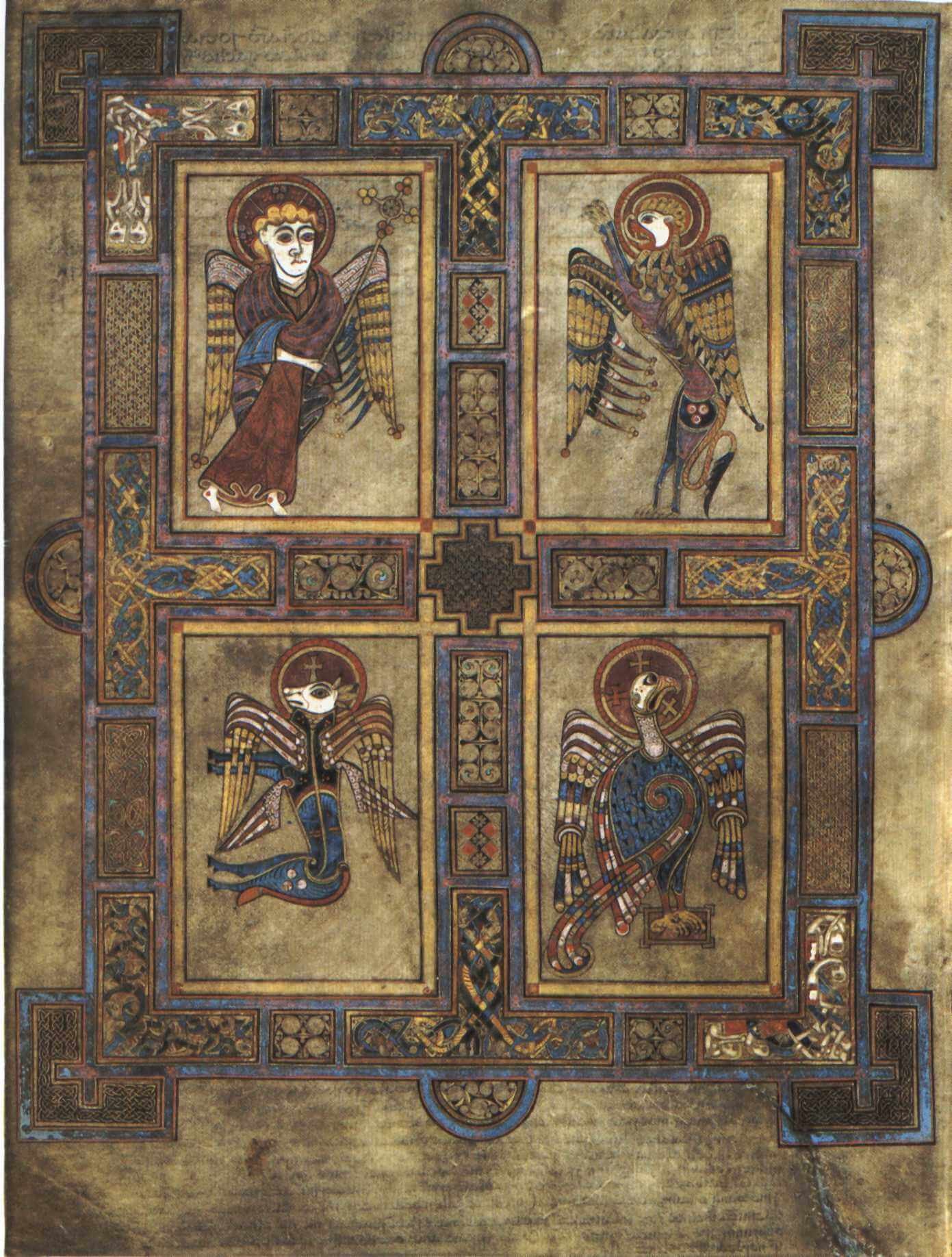Welcome to 31 Days of Medieval Manuscripts, a month-long series introducing the fascinating and brilliant world of medieval illuminated manuscripts.
It only seems appropriate to start off the series with the Book of Kells, as it is arguably the world’s most iconic illuminated manuscript. The Book of Kells is a gospel book written and decorated by British or Irish monks in the first millennium (most likely c. 800 AD). Named after the Abbey of Kells in Ireland but was not necessarily completed there, the manuscript now resides at Trinity College Library in Dublin; it has been digitized and is completely viewable online. I suggest looking at the book there as you read this article, because the public domain images available are not the best.
The Book of Kells
The Book of Kells is an example of the Insular manuscript tradition that grew up in the British, Irish, and Scottish monasteries of the 6th through 9th centuries CE; the Book of Durrow and the Lindisfarne Gospels are two others. A staple of any medieval art history survey, Kells is notable for its vibrant colors and intricate, detailed decoration. Among the manuscript’s most impressive features is its exquisite interlace – a twisting, turning, ribbon-like motif characteristic of the book’s Celtic milieu and of the Insular manuscript tradition. In the Book of Kells, interlace can be found in the borders, inside large initials and illustrations, and within full-page decorations called carpet pages (they look sort of like Persian carpets in painted form).
As a Gospel book – a text containing the four canonical Gospels of the Christian New Testament, the manuscript also contains beautiful, stylized representations of the four evangelists (who wrote the Gospels). They appear both as individual men in so-called “author portraits” at the start of their respective Gospels and as their symbols – the man or angel of St. Matthew, the lion of St. Mark, the ox of St. Luke, and the eagle of St. John. A single page containing all four symbols, surrounded by elaborate interlace borders, appears below.

While working on this post, I spent some time browsing the Trinity College Library’s webpage for its permanent Book of Kells display. It is full of photographs of the exhibition, which includes several massive banners reproducing some of the book’s most famous pages on a scale that is hundreds of times larger than reality. I was suddenly struck by the incredible level of detail that the book has to contain in order to look so impressive even under such extreme magnification. I especially love the tiny animals like mice and butterflies hidden within the ornament. In fact, it is easier to appreciate the subtleties of the manuscript’s decorations on a large scale than it is at normal size (though I unfortunately can’t pretend to have ever seen it in person). Art historians always try to be aware of the visual and psychological distortions that occur upon viewing works of art out of proportion on projection screens or under the heavy use of the zoom button, but there are still moments like this when that fact really hits me by surprise.
To understand why the Book of Kells is so amazing and important, check out my other post on the manuscript.
Expert guidance for your next art museum adventure


